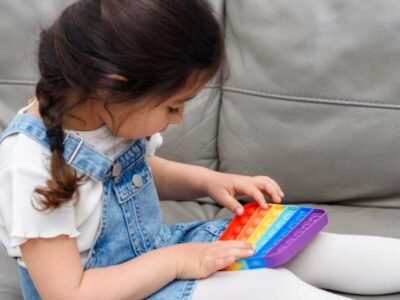Before starting with standard algebraic identities, let’s first understand what Algebra means, its etymology, different meanings, and as a branch of mathematics.
The etymology of Algebra:
Algebra is a modern form of the Arabic word al-jabr, which translates to “reunion of broken parts.” The word al-jabr was from the title of a 9th-century book, “Ilm al-jabr wa l-muqābala”, which translates to “the science of restoring and balancing.” In this book, the term al-jabr was referred to as moving a term from one side of an equation.
Meaning of Algebra
Algebra is a mathematical structure used to represent numbers and various quantities in equations and different formulas. As a branch of mathematics, algebra, among many other things, includes several standard algebraic identities.
In this article, we will learn about standard algebraic identities:
What are algebraic identities?
Equations wherein the value of the right-hand side of the equation is identically equal to the value of the left-hand side of the equation. A striking feature of algebraic identities is that they can satisfy all the values of variables.
Almost all of the algebraic identities are derived from the binomial expansion theorem.
Below is the binomial theorem:
Following are the Standard algebraic identities derived from the above-given formulae:
Identity 1: (a+b)2 = a2+2ab+b2
Identity 2: (a-b)2= a2-2ab-b2
Identity 3: (a2-b2)= (a+b)(a-b)
Identity 4: (x + a)(x + b) = x2+ (a + b) x + ab
Identity 5: (a+b+c)2 = a2+b2+c2+2ab+2bc+2ca
Identity 6: (a+b)3=a3+b3+3ab(a+b)
Identity 7: (a-b)3=a3-b3-3ab(a-b)
Identity 8: a3+b3+c3-3abc =(a+b+c)(a2+b2+c2-ab-bc-ca)
Verification of algebraic identities:
- One method to verify an algebraic identity is a substitution, wherein the variables in an algebraic identity are substituted with values, and an arithmetic operation is conducted upon it.
- Another method is the activity method, which involves the application of basic geometry, and some other materials are needed to prove the algebraic identity.
Difference between algebraic identities and algebraic expression:
An algebraic expression consists of constants and the variables, in which variables can take any value. Hence, in algebraic expression, the expression value will change when variables are changed. But in an algebraic identity, the expression will always remain equal irrespective of the change in variables.
Let us also understand what constants are and what variables are in an algebraic identity with the help of a question.
Question 1. Separate And list the constants and the variables from the question below:
-6, 4+x, 2x+9y, 8, 4.5y, 3y2+z
Solution- Variables are the ones that include any letter such as x, y, z, etc., along with the numbers. At the same time, constants are single numerical values.
In the given question,
Constants = -6, -8
Variables = 2x+9y, 4+x, 4.5y, 3y2+z
With the change in the value of letters, the value of the set of equations varies; hence, they are called variables, which can change.
Uses of Algebraic identities:
- Squares and products of different algebraic expressions can be solved using algebraic identities.
- In the calculation of products and numbers and other things.
- Algebraic identities help in performing factorization.
- Algebraic identities assist in simplification and deriving a faster way.
- It plays a significant role in solving quadratic equations and high power equations.
- Algebraic Identities aid in proving trigonometric identities.
- They come in handy in solving integration and differentiation problems.
Let’s try to understand a few of the identities with the help of examples:
Example 1: Find the product of (p + 1)(p + 1) using standard algebraic identities.
Solution: (p + 1)(p + 1) can be written as (p+1)2. Thus, it is of the form Identity 1. where a = p and b = 1. So we have,
(p+1)2=(p)2+2(p)(1)+(1)2=p2+2p+1
Example 2: Factorise (p4 – 1) using standard algebraic identities.
Solution: (p4 – 1) is of the form Identity 3 where a =p2 and b = 1. So we have,
(p4-1)=((p2)2-12)=(p2+1)(p2-1)
The factor (p2 – 1) can be further factored using the same Identity 3 where a = p and b = 1. So,
(p4-1)=(p2+1)((p)2-(1)2)=(p2+1)(p+1)(p-1)
Example 3: Expand (3p-4q)3 using standard algebraic identities.
Solution: (3p-4q)3 is of the form Identity 7 where a = 3p and b = 4q. So we have,
(3p-4q)3=(3p)3-(4q)3-3(3p)(4q)(3p-4q)=27p3-64q3-108p2q+144pq2
Example 4: Using identities, solve 197 × 203.
Solution: 197 × 303 can be written as ( 200 – 3 ) × ( 200 + 3 )
And this is based on the algebraic identity (a + b)(a – b) = a2 – b2
Here we have a = 200, and b = 3
Substituting the values in the above identity, we get:
(200 – 3)(200 + 3) = 2002 – 32
= 40000 – 9
= 39991
Answer: Therefore 297 × 303 = 39991
Summary:
In general, algebraic identities are already solved problems. They are shortcuts devised to solve a problem without following the traditional long route. Let’s say they help in solving complicated modern-day problems with easy and swift solutions. We often hear children say in schools that how can algebra help them in real life? But most of us aren’t aware of how algebra can be useful in real-life problems. Here are some common examples of people using algebra in their daily lives:
- A shopkeeper uses algebra to devise the shelf life of a perishable item in his inventory.
- In almost all the fields of education, basic algebra is applied. As physical and chemical sciences use basic algebraic equations, Computer science uses algebraic equations to infer algorithms. Basic algebraic equations are used to calculate correct proportions to create a masterpiece, even in art and architecture.
- To calculate the lowest price at which a product can be sold, to cover the expenses, algebra is applied there.
Hence from this, it would suffice that algebra is essential in our daily activities.












